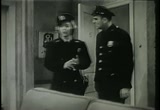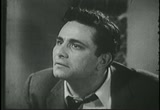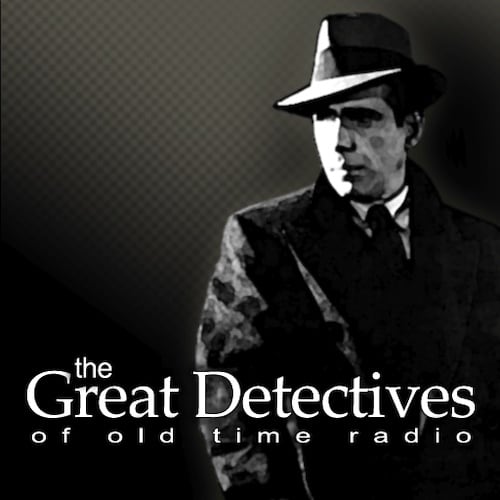It wasn’t Cagney and Lacey in the 1980s. It wasn’t Police Woman in the 1970s. Rather, the first police police woman to come to television was Casey Jones (played by Beverly Garland.)

The concept of following the adventures of a Policewoman wasn’t new, but it was rarely tried. In 1946, ABC had brought stories from the case files of Lieutenant Mary Sullivan of the NYPD, the nation’s first female homicide police detective and the nation’s first director of Policewomen.
In 1957, Decoy went into syndication starring Garland as Casey Jones, a New York City policewoman. Some declare the show a female Dragnet. The comparison is not without merits. Decoy not only had the heroine as a narrator, but was often a police procedural, although sometimes it dabbled in crime melodrama. However, Decoy, while having a technical advisor from the NYPD, was not based on real-life cases. It remains unique among police shows of its era because of its powerful female lead.
I’m a Cop Not a Sociologist
In the episode, “Dark Corridor,” Casey goes undercover to investigate the murder of a model inmate in a women’s prison. The warden has been lenient and tried to focus the prison on rehabilitation and is concerned that the murder could undermine her efforts with the state. Casey cuts her off with a simple, “I’m a policewoman, not a sociologist.”
When the show was at its best, Casey kept to that simple code, as she took on gamblers, robbers, murderers, drug dealers, smugglers, and thieves just like her male counterparts. However, Casey also investigated some crimes that targeted women which weren’t ususally dealt with on television such as rape and obscene phone calls.
Casey was a great character. She was tough and intelligent, but also sensitive. Casey cared about people and empathized with them, even some of the criminals. However, Casey’s sensitive nature didn’t stop her from doing her job (with one exception I’ll discuss below.)
At the end of most episodes, she breaks the fourth wall and talks to the audience for a minute with some thoughts on the case just concluded.
The vast majority of episodes have Casey going undercover for at least part of the episode. Casey’s undercover roles included society heiress, nurse, carnival dancer, shop lifter, and junkie. It makes you appreciate the talent of Ms. Garland, who not only had to play her character, but play her character pretending to be someone else in nearly every episode.
Decoy also welcomed a variety of guest stars, many of whom would go on to great things. Larry Hagman, who would go on to fame in Dallas made his first television appearance in a bit part in “Saturday Was Lost.” Suzanne Pleshette made an early TV appearance in, “The Sound of Tears.” And a young Peter Falk gave a show-stealing guest performance in “The Comeback” three years before getting a best supporting actor Ocsar Nomination and a decade before he would make his first appearance as Lieutenant Columbo.

While Garland was the only actor to appear in every episode, she had one big supporting player: New York City. If nothing else were good about Decoy, it’d be worth watching for its look at 1950s New York City. The show made New York come alive and the setting was key to the whole story.
The Best of Decoy:
20 of the Public Domain Decoy episodes have made their way online and several of the non-public domain episodes have also made their way onto DVD releases from Timeless Video, Alpha Video, and other companies. Over the past year, from a variety of sources, I’ve been able to able to watch 31 of the 39 episodes of Decoy. Some of the best of these were:
Also known as Stranglehold. The plot is that a man was strangled and that the police believe that a woman who lives in the building knows who did it. Casey goes undercover to get the woman to spill. This a powerful suspense-filled Noirish episode that sets a great tone for the rest of the series.
Casey investigates the death of an engaged man. Casey does a great job investigating the case, while dealing with old wounds it reopens, as she lost the man she loved to an act of violence.
This is one episode where a Dragnet comparison is apt. Casey has to help a teenage girl what happened to her sister, while they were under the influence of drugs. A powerfully done and unforgetable episode that could have been produced by Jack Webb.
Casey goes undercover in an office to investigate an arson where all fingers of suspicion are pointed at a woman who had been a mental institution. Good mystery and the denoument is dramatic and fitting.
Peter Falk plays a race track cashier who is in cahoots with a criminal making counterfeit parimutuelracing tickets. Casey pretends to be crooked and wanting a piece of the action in exchange for her cooperation, so she can break the racket. However, Falk believes she’s too classy to go crooked, tries to talk her out of it, and then gets beat up for trying to steal the picture that the counterfeiting took of Casey taking his money so that she can get out of it. Falk is frustrating to both Casey and the counterfeiting boss but endearing at the same time in a TV appearance that foreshadowed a great acting career to come.
Casey goes undercover to bust up a gambling ring. The plan is for police to follow her to the location. The problem? The gamblers have such a confusing system of switching cars and making turns, that the police can’t keep up. Inspired by space satellites, the police improvise a high tech solution, at least for 1958.
Other episodes that are well-worth watching include Fiesta at Midnight, The First Arrest, Tin Pan Payoff, Shadow of Van Gogh, and Ladies Man.
Who is Casey Jones?
Of course, the episodes weren’t all great. One of the challenges in Decoy was that the portrayal of Casey was uneven. Decoy was definitely trying to reach female viewers, howwever every Decoy script was written by a man who imagined what type of script women might like. In addition, no one wrote more than four episodes of Decoy, so there were differing views of the character that came to bear.
The episode, “Cry Revenge” was bizarre with a young disabled woman marrying a man who was making harassing and threatening phone calls to her mother in order to get revenge on her mother for her father leaving. Similarly weird, was the episode, “Death Watch” (IMDB link only) which featured a shoplifting ring that did murder-for-hire as a sideline, and an odd melodramatic plot with a punchy son.
Decoy rarely went more wrong than when Casey went outside of police work and towards social work. In an unforgetably disturbing scene at the end of, “Night Light,” Casey urges a criminal to reject his son (apparently to prevent him from becoming a criminal), and the criminal then proceeds to tell his son that he doesn’t want him or care about him.
Yeah, that’s the key to a well-adjusted adulthood.
The most egregious example of this was the episode, “Scapegoat” (IMDB only) in which Casey travels out of town to bring back a suspect. The suspect is embarassed by having to wear handcuffs, so Casey feels bad for her and takes the handcuffs off as long as the fugitive promises not to run away. Casey gets distracted for a minute and low and behold, the fugure (“shock”) escapes. The convict is gets her mentally disabled ten year old-son who she plans to throw off a bridge because she’s unable to pay for the private hospital she had him and feels that he’s better off dead than a state institution. Casey talks her out of throwing her son over the bridge by using her own boneheaded move as proof that government employees are capable of compassion and caring.
This episode was a classic case of a writer violating their character. It’s almost shocking that this one made it to air because it contradicts every other episode that shows Casey as calm and thoroughly competent, with emotions in check.
“Across the World” is notable for Casey being knocked out early in the episode and the audience getting to watch three people they don’t know or care about at each other’s throats in an after-school special style show that I guess was trying to urge people not to get involved in international gun-running.
I also didn’t buy the emotional angles in “Eye for an Eye,” but that may have been a matter of taste.
Still, with both its good and bad episodes, Decoy remains a memorable program, that any fan of Classic TV detectives should acquaint themselves with.
20 Public Domain Decoy Episodes available at the Internet Archive.
